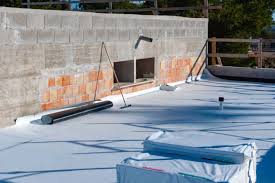Flat roofs present unique challenges for homeowners and building managers. They demand durable materials, reliable seams, and energy-efficient performance. Among the most trusted options today is the tpo-roofing-membrane, a single-ply solution designed to resist weather, reflect heat, and extend roof life. This guide explains what makes tpo-roofing-membrane a smart choice and how to evaluate it for your property. Using the exact keyword in your content helps improve search relevance and visibility.
What exactly is the tpo-roofing-membrane? TPO stands for thermoplastic olefin, a material that creates a flexible, UV-resistant surface when welded at the seams. The result is a seamless, monolithic roof layer that minimizes leaks and reduces thermal stress on the underlying structure. For building owners who value energy efficiency, the reflective surface of many TPO products helps keep indoor temperatures stable while lowering cooling costs in warm months. The keyword itself is often searched by facility managers looking for durable, cost-effective flat-roof solutions.
Key benefits of tpo-roofing-membrane
Durability and performance top the list. tpo-roofing-membrane is known for its tough resistance to punctures, tears, and weathering. The composition often includes reinforcing fabrics and a protective top layer, which together extend service life in challenging climates. Because the membrane is heat-welded, joints are strong and waterproof, reducing the likelihood of leaks after storm events.
Energy efficiency is another major advantage. A highly reflective surface can dramatically reduce heat absorption, which lowers air conditioning loads and can improve occupant comfort. In addition, many manufacturers offer membranes with antimicrobial or resistant properties that help when debris accumulates on the roof surface.
Installation considerations matter just as much as the material itself. A professional roofer will prepare the substrate, ensure proper drainage, and execute precise heat-welded seams along the entire roof. Thickness and formulation vary by product line, but typical membranes range from 45 to 60 mils in thickness. Good workmanship reduces seam failures and ensures a long-term roof warranty.
Maintenance, lifespan, and warranties
With proper installation and routine inspections, a tpo-roofing-membrane system can provide 15 to 20 years of reliable service, depending on location and maintenance. Regular inspections help catch issues such as seam separations or membrane puckering early, allowing for targeted repairs that protect the roof’s integrity. Cleaning is usually straightforward: remove debris, rinse with water, and avoid harsh chemicals that could degrade reflective surfaces.
When comparing options, consider the environmental impact of a roof system. TPO membranes typically contain fewer volatile organic compounds than older roofing materials, and their reflective surface contributes to cooler buildings and reduced urban heat island effects. Be sure to review the warranty details with your contractor, including conditions for UV exposure, puncture resistance, and seam integrity.
Cost considerations and ROI
Initial installation cost for tpo-roofing-membrane can be higher than some older options, but lifecycle savings often offset the premium. Energy savings from high reflectivity, combined with reduced maintenance and longer service life, contribute to a favorable return on investment over time. For facilities with large roof areas or frequent weather exposure, the lower annual maintenance costs can be a compelling factor. Always request a detailed life-cycle analysis from your roofing contractor to compare options accurately.
Other factors to consider include wind uplift resistance, code compliance, and compatibility with existing insulation. A qualified contractor can assess roof geometry, climate, and energy goals to recommend a suitable tpo-roofing-membrane variant and installation method. If you’re exploring this option, you can read more about the specific product details here: tpo-roofing-membrane.
For more resources on roofing options and project planning, visit the Homepage.

